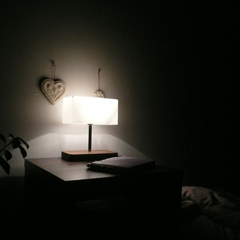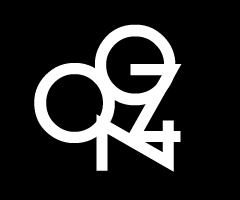OZ, a internet piece for “La Revue du 104â€
For a long time now, my work has questioned text in its written form, as well as translation between various languages, translatory movements, written text in general and more particularly, the moment, and conditions of its becoming an image.
When invited by Camille Louis, I was offered the possibility to create a work specifically designed for internet, the context being the first issue of “La Revue du 104â€, which focused on Aby Warburg’s work and research.
When I read the 104 journal project, I immediately decided to take one of my artworks as a starting point and case study. The work in question is an interactive installation called « Sweet Dream (Toulouse-Paris) ». I selected this work for two main reasons: first, because it was a work in progress, and second, because I was using the Internet both as a link and as an interstice.
« Sweet Dream (Toulouse-Paris) » – A summary.
The installation is displayed in two different geographical spaces simultaneously:
– “Duplex Gallery†in Toulouse – France.
Two common keys from a computer keyboard are embedded in one of the walls of the gallery. These keys bear the words “Wake up†and “Sleepâ€. Visitors can press any of these keys at anytime.


– My apartment in Paris – France.
My bedside table lamp is switched on and off whenever a visitor presses the “Wake up†or the “Sleep†button.
For the duration of the exhibition, the installation allows visitors to control the lamp, through a computer application and a signal sent via the network.
The installation questions two different physical spaces as narrative components of reality and fiction. One is public (the gallery), one is private (my bedroom).
Even though the info card gives the audience enough clues to what is at stake (the title, the list of the various elements of the installation, and their locations), the challenge of such an installation is that there is no immediate proof that the two spaces are connected, and that there is a consequence in pushing a button.
So this piece relies on the visitor’s belief that is, for him to engage in the work, he needs to believe in it. And of course, this in itself is a hurdle, since the minimal aspect of the installation is off-putting, and it is an immaterial, empty space (the internet) that connects him or her to the other side of the installation.
OZ.
For “La revue du 104â€, I really wanted to work on this empty space, but didn’t want to make this interstice visible as such. Instead, my intention was to infuse it with something new, in order to reveal it.
Searching how to affect the interstice was deliberately paved with detours, digressions, intervals, and drifts.
In his work, Aby Warburg speaks about the iconology of the in-between, where the in-between gap is a kind of revelation, and is essential to an iconology which aim is not to explain, resolve a problem or a complexity, but to exhibit it, to show it in a new light and through a new production of signs (a montage).
This way of dealing with iconology was very familiar to me, so I consciously took on this method.
Firstly, I observed the two images produced on each side of my installation.
In Toulouse, I saw a very minimal image: a white wall with two black keys. In Paris, a very classical Still Life appeared each time my lamp was switched on.
I liked the fact that the simple act of pressing a button could produce a real Still Life. And while observing this, I realized how much I favoured the “On†in the process. I told myself that the pressing of a button (ON) was producing an alternative to the usual, a kind of variation of reality, something nearly magical (OZ).
Very naturally, this led me to the “Wizard of Ozâ€, a film in which the concept of belief is essential. When viewing this film again, still questioning the interval, I focused on the transition between the real world and the world of OZ.
In that particular segment, Dorothy is running away from the tornado and takes shelter in the house. Knocked out by a flying window, she passes out (she falls in Oz if I may say). When she comes to, she gets up, stands by the window and looks outside. The layout of this scene is pretty obvious: she stands in front of a cinema screen, she’s become a spectator. From then on the film metaphor appears clearly: Oz is the magic of cinema, it’s the land of fiction, where reality is twisted and becomes an alternate space where illusion is more real than reality itself.
When Dorothy eventually comes out of the house, she looks around her, puzzled, and says: « Toto, I have the feeling we’re not in Kansas anymore », which can literally translated into: Toto, I have the feeling we’re not in reality anymore. From then on, the metaphor of an alternate space will unfold, telling us how much staged machinery can fascinate, how much we can believe in it, even though we know it isn’t reality.
The end of the movie holds the resolving of the magical mystery, thus speaking about the main and ambivalent belief in cinema:
When the powerful wizard appears solely as a common man, he actually has the same features as the illusionist that Dorothy met at the start of the movie, the same person that was faking reading in a crystal ball…
With these concepts in mind, I worked on my proposition for the 104. I tried to synthesize them and show how the internet could integrate them all at once.
I also realised that there was a connection between the word “ON†and the word “OZâ€. That is, they were formed by the same signs. And finally that, by rotating one, you would end up with the other.
The end piece uses this relationship metaphorically, and tries with very minimal formal means such as typography, rotating movement, sound piece, and velocity implied by the users’ connection speed, to express the singular relation one has with reality when on the internet, and especially when one practices fiction on the internet.
It shows how a simple repetitive movement can take you from one universe to another.
